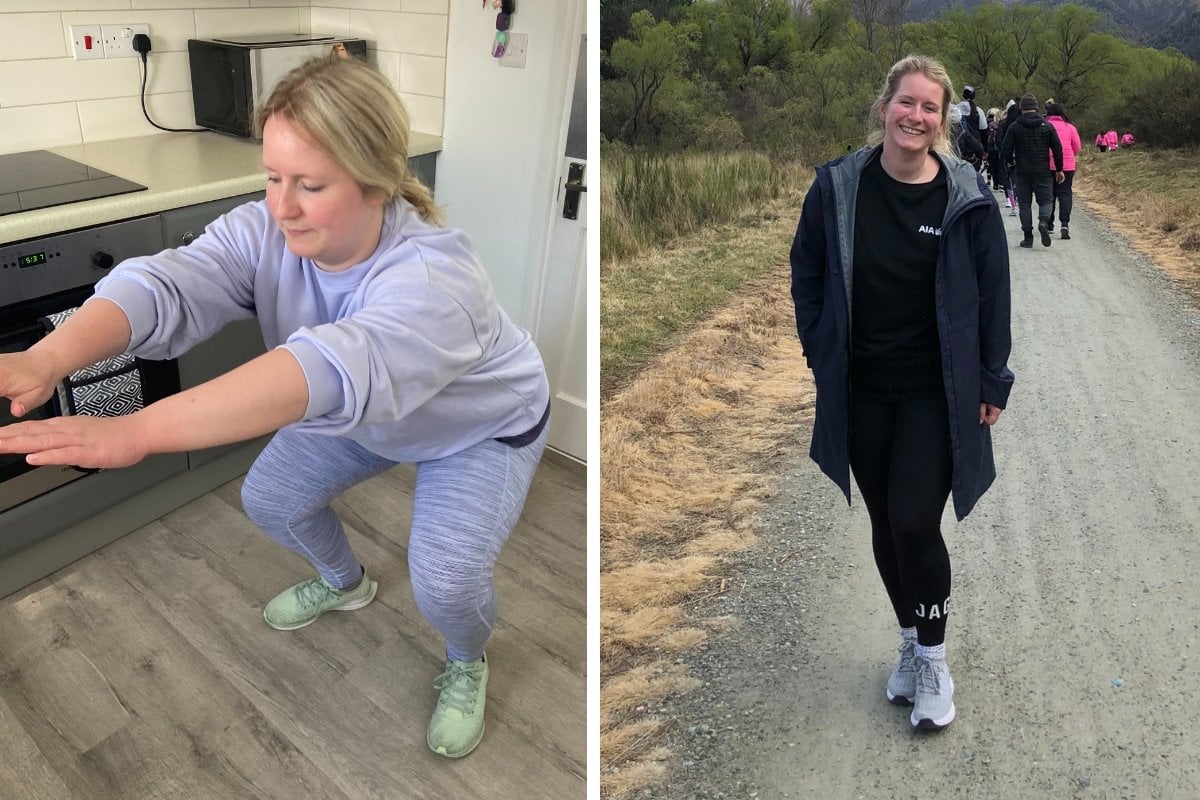
The barista is eyeing me curiously. Likely because I come to this cafe a few mornings a week – but this is the first time I’ve launched into some clearly-not-as-subtle-as-I’d-hoped fast feet while waiting for my latte.
I’m a few days into a week-long trial of ‘exercise snacks’, which involves weaving short bursts of activity throughout the day – from squats while you wait for the kettle to boil (one of my favourites) to a brisk lounge room walk while you leave that voice note. And while moments like the one at the cafe aren’t exactly this self-conscious girl’s dream, I’m already enjoying the fitness challenge.
Read more: PT Sam Wood says there is a "magic pill" for fitness in your 40s.
Plus, as somebody who a) spends most of the day sitting at a home desk and b) whose workout motivation can be quick to waver, I’ve been wondering: could these short-but-sweet efforts be the ticket to scoring more regular daily movement?
Watch Booty Burn Trim by Peaches Pilates. Post continues after the video.
The science behind snacking.
You might’ve heard about exercise snacking before, so why try it now? Well, fresh science makes a compelling case.
A 2022 study by the University of Toronto suggests regularly interrupting periods of prolonged sitting with brief spells of activity – such as a two-minute walk or 15 bodyweight squats – may help us to maintain muscle mass and quality. Meanwhile, according to recent University of Sydney research, three or four one-minute bursts of vigorous activity each day is associated with increased longevity. Those scientists name check running for the bus, a power walk while doing errands and playing high-energy games with the kids – all things many of us naturally build into our lives anyway.